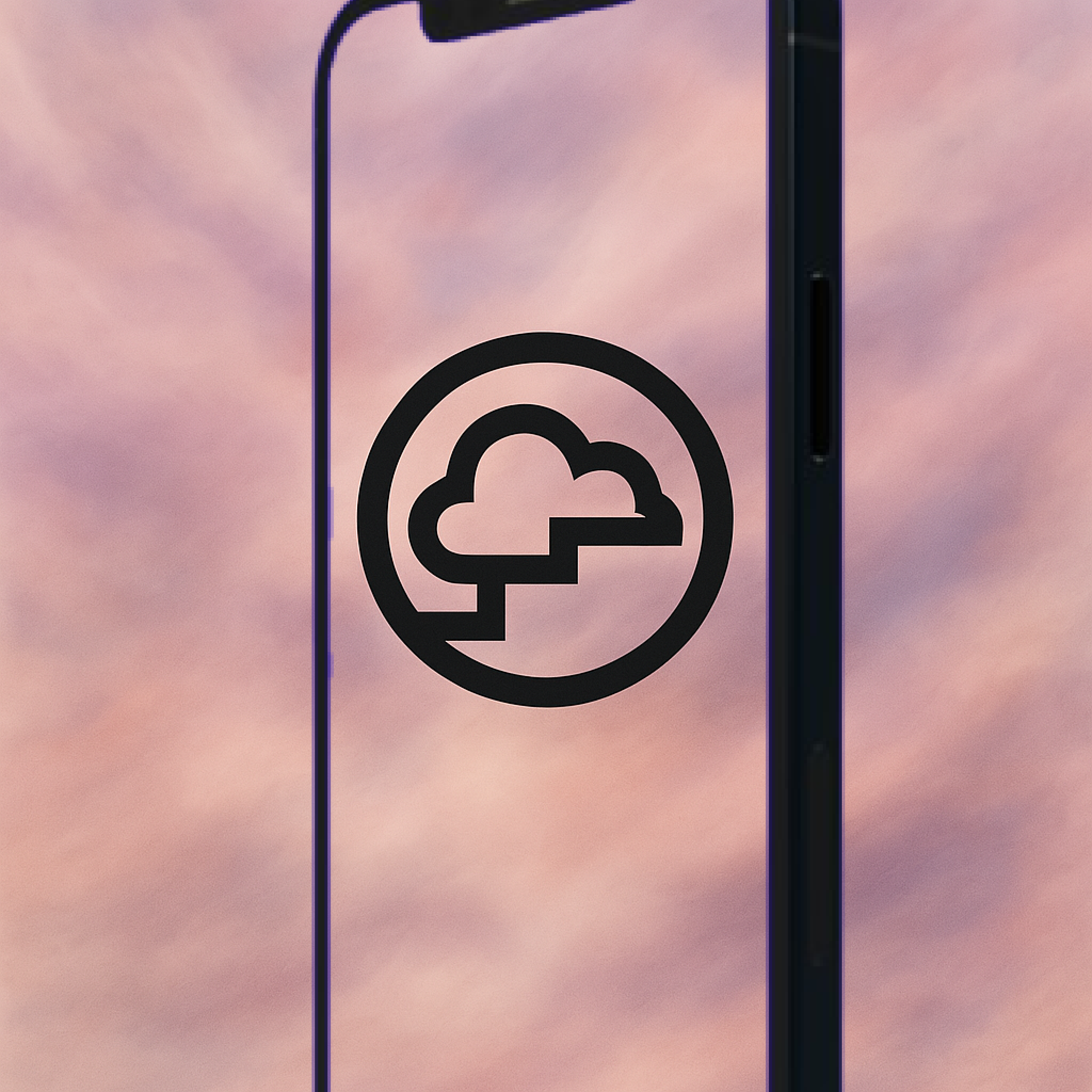DESIGN SPRINT/01-02.2020
ROLE: Facilitator
DREAMS
Dreams is on a mission to make saving money a joyful and achievable part of everyday life through their fintech app. To support their ambition of reaching a broader audience, we were brought in to explore new ways of enhancing product expansion and organic user growth. I took a role in planning and facilitating the design sprint together with my team.
DESIGN SPRINT PROCESS
DAY 1
EXPERT INSIGHTS
We began by aligning on context. Through 'expert interviews' with some of the people in the Dreams team, we gathered key insights, pain points, and opportunities. These conversations lead to “Can we…?"-questions to direct the sprint. Together, we defined a long-term goal and wrote sprint questions to guide the rest of the process.
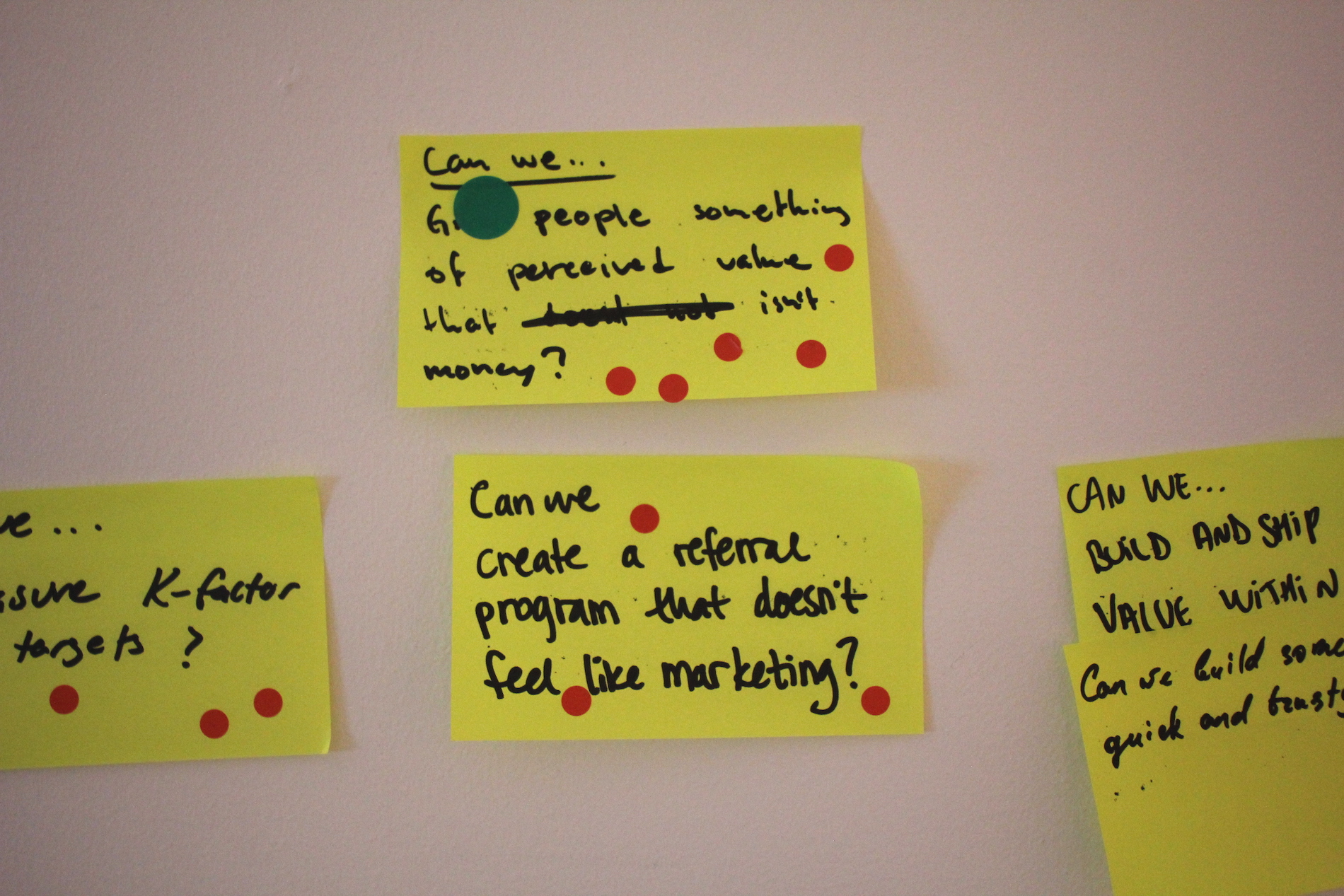
"CAN WE...?" QUESTIONS
IDEA GENERATION
The afternoon shifted into idea generation. I facilitated sketching sessions rooted in the challenge space, using exercises like note-taking, Crazy 8s, and rapid concept ideation. For some participants, this was a new pace of working—so part of my role became creating psychological safety while pushing momentum. The day ended with each team member having one presentable concept.
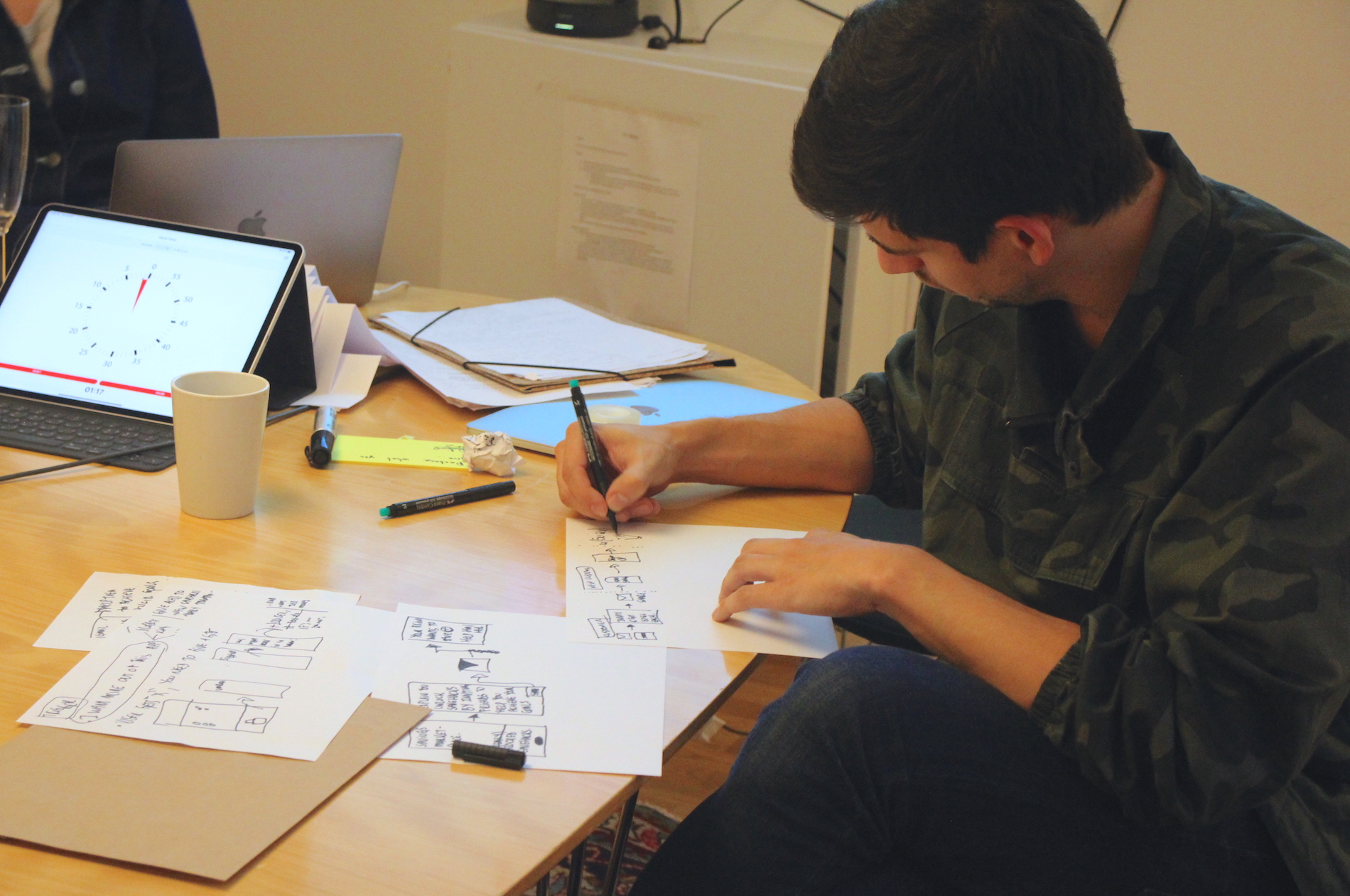
CRAZY 8/SKETCHING
DAY 2
CONCEPT EVALUATION & SELECTION
All concepts were anonymized and displayed on the wall for team critique. Using dot-voting, two clear front-runners emerged: one centered on a monetary reward, and another built on playful gamification.
From there, we moved into collaborative storyboarding. The two chosen concepts were mapped out into a detailed flow, laying the foundation for prototyping. Managing two parallel concepts within the same sprint introduced complexity, but allowed us to compare them side-by-side.
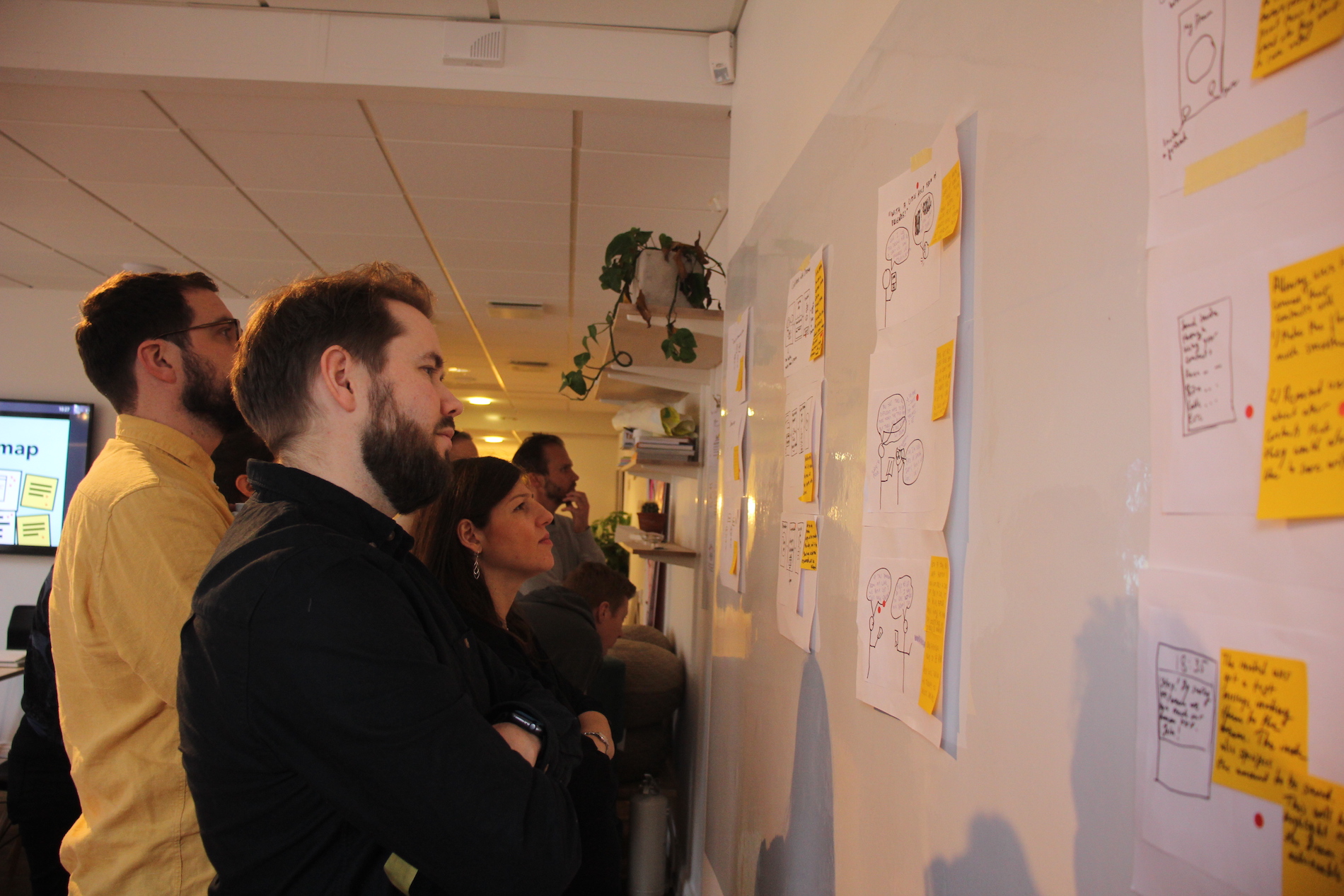
HEATMAP WITH DOT-VOTING
STORYBOARDING & USER FLOWS
The focus shifted to detailed storyboarding of the chosen concepts and crafting a step-by-step user flow. Ensuring detailed storyboards worked as a base for prototype creation, although managing two concepts simultaneously was challenging.
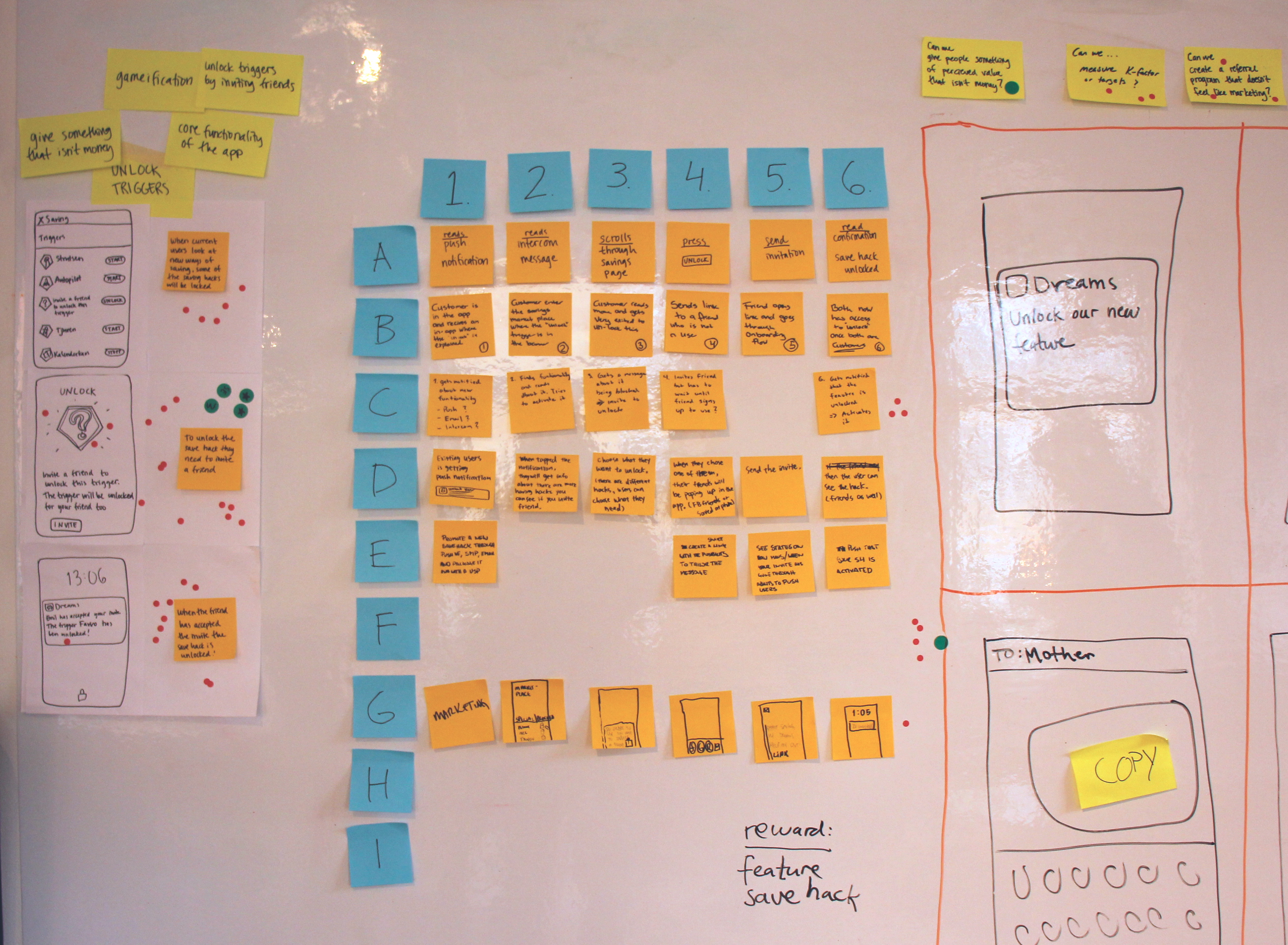
USER FLOW/STORYBOARD OVERVIEW
Day 3
PROTOTYPING
Our design team used Figma to develop testable prototypes mirroring the storyboard sketches. The challenge was found in making rapid UI decisions, particularly when handling two prototypes. The Dreams design library helped in making this more effective. Meanwhile, we recruited testers for next day's testing, getting hold of participants through the Hyper Island network.
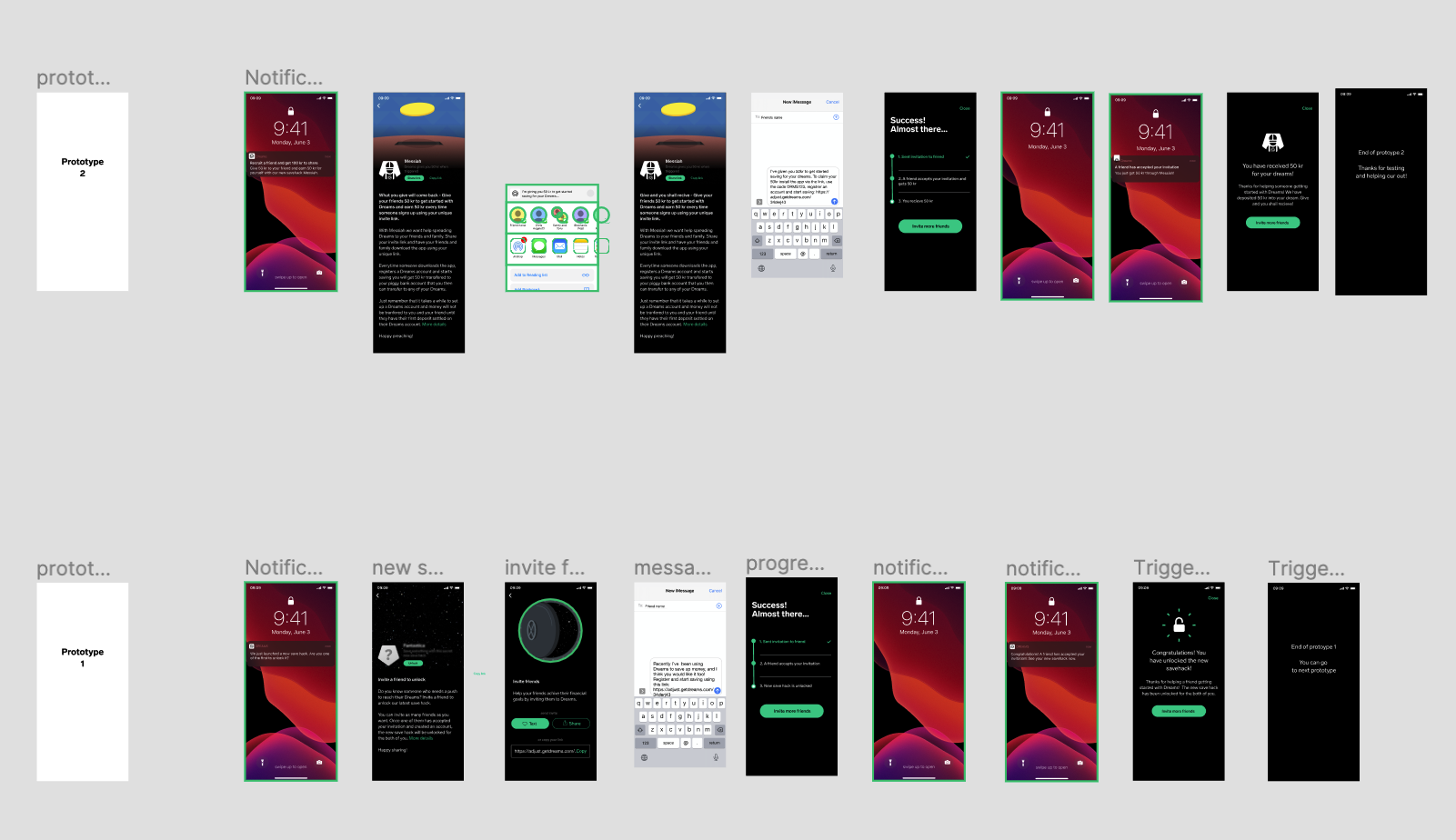
FIGMA PROTOTYPE
Day 4
TESTING, TESTING
Testing day arrived, supported by a semi-structured interview guide. Remote video sessions allowed testers to interact with prototypes while sharing their screens. Valuable user insights were gained by the day's end.
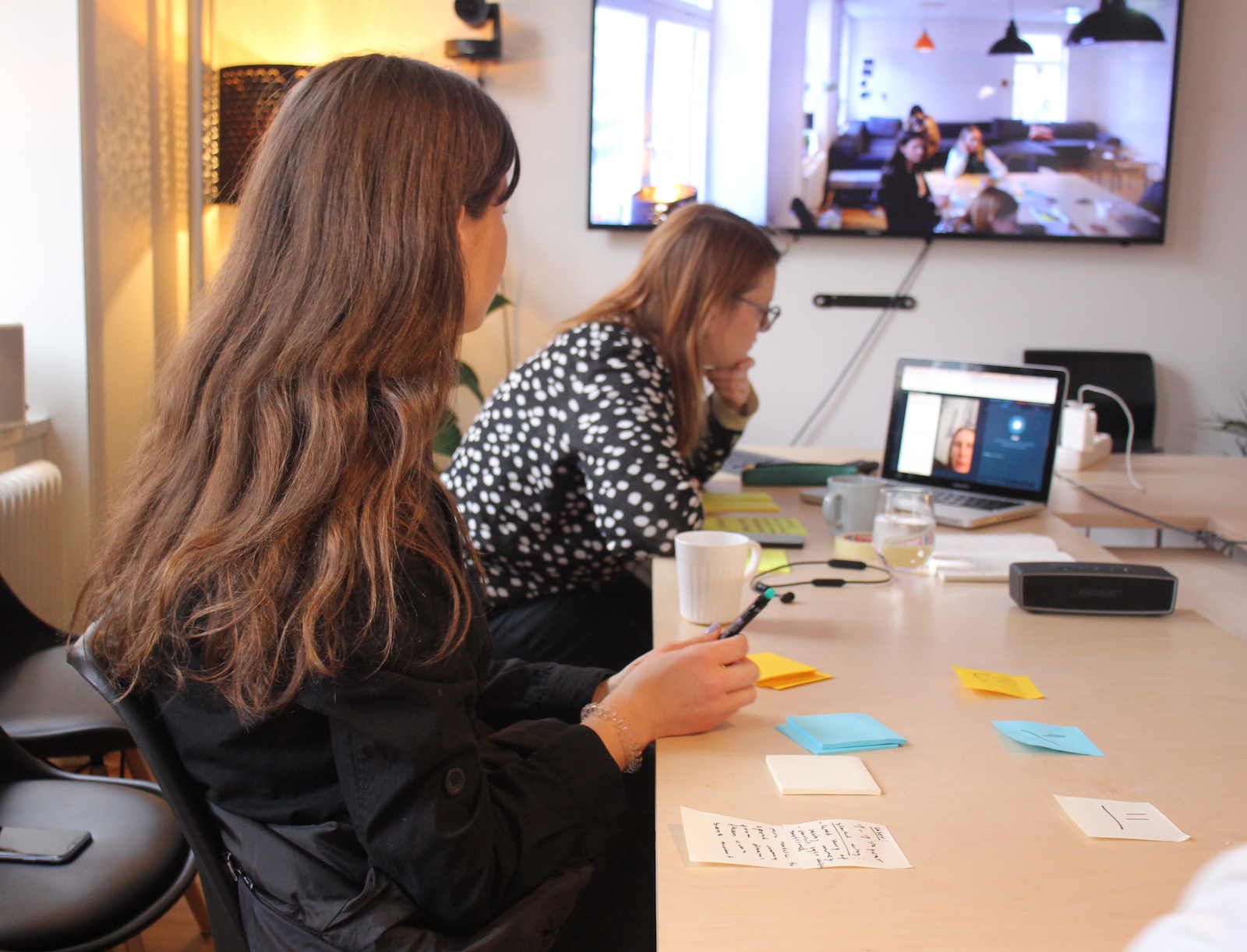
REMOTE TESTING WITH USERS
Insights
We did three test rounds with two prototypes to gather user insights, guiding us toward the final prototype.

PROTOYPE 1

PROTOTYPE 2
Insights
— Prototype 1, centered around a monetary reward, was the most intuitive. Users were drawn to its clarity and motivating structure.
— The gamified concept (a mystery gift) sparked curiosity, but lacked the urgency or clarity to drive completion or referrals.
— The “unlock to reveal” mechanic was well received and could be leveraged beyond rewards—for instance, to access educational content like savings tips or classes.
— Referral activity increased when users saw that friends were planning purchases or trips.
— Group chats were the preferred space for sharing links, rather than sending out pre-filled messages.
— Custom, personal messages resonated more than generic ones. Users wanted their invitations to feel authentic.
— Seeing incoming funds in real time acted as a strong motivator for continued sharing.
— In-app communication was deemed more reliable and trustworthy than push notifications.
Outcome
After four weeks of testing and refining the design, we delivered a prototype ready to be implemented to Dreams. The chosen idea offered a monetary reward: both the inviter and invitee receive 50 SEK. We did not include any pre-written messages, instead we allowed direct link sharing from the app and for the user themselves to write their own message if they wanted to.
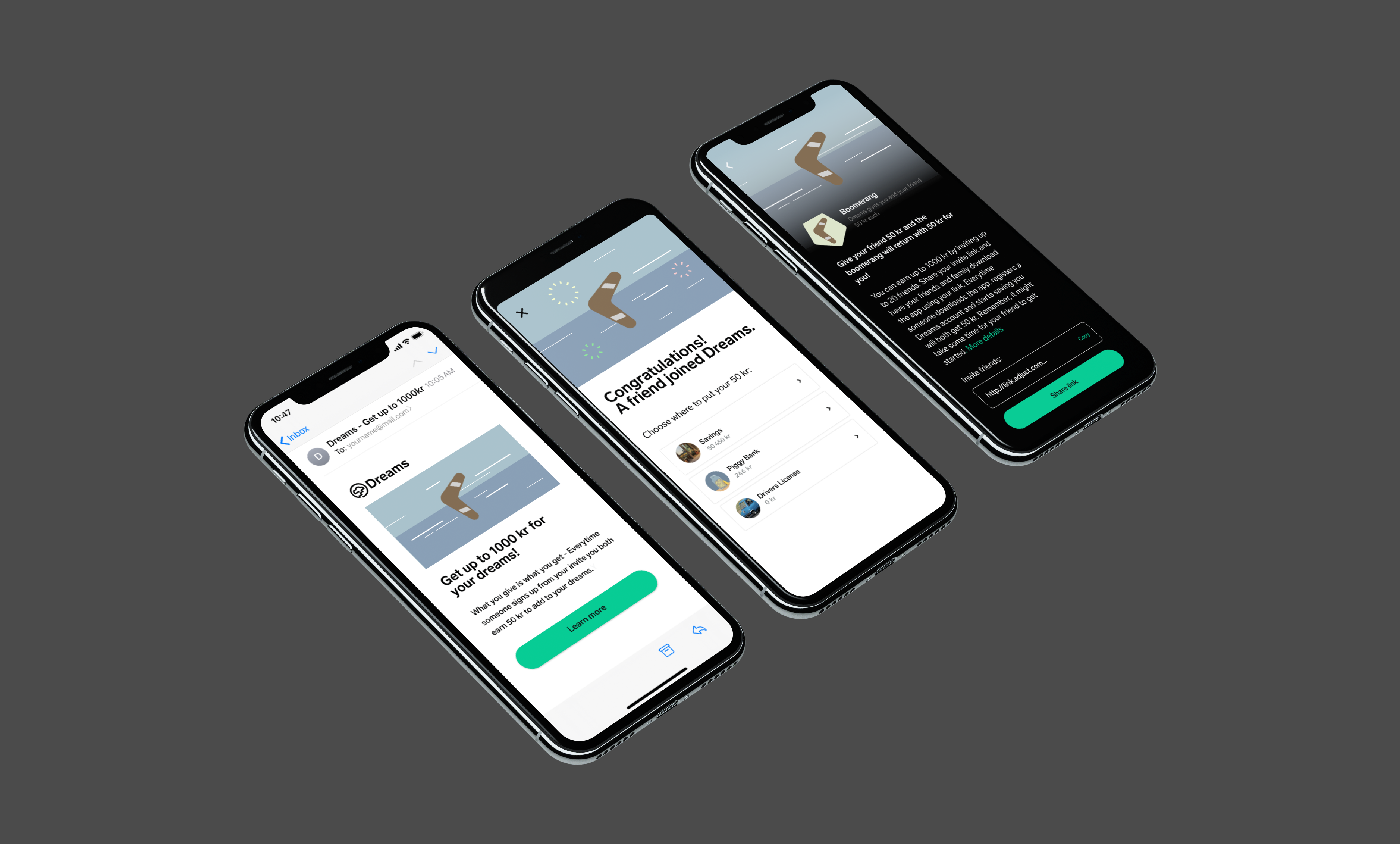
MOCK-UP OF CHOSEN CONCEPT
Other results
— Dreams implemented the referral program in the Norwegian market.
— Our team was invited back to Dreams Office to present the sprint method and findings company-wide.
— Introduced sprint exercises, impacting internal way of working in the Dreams-team.
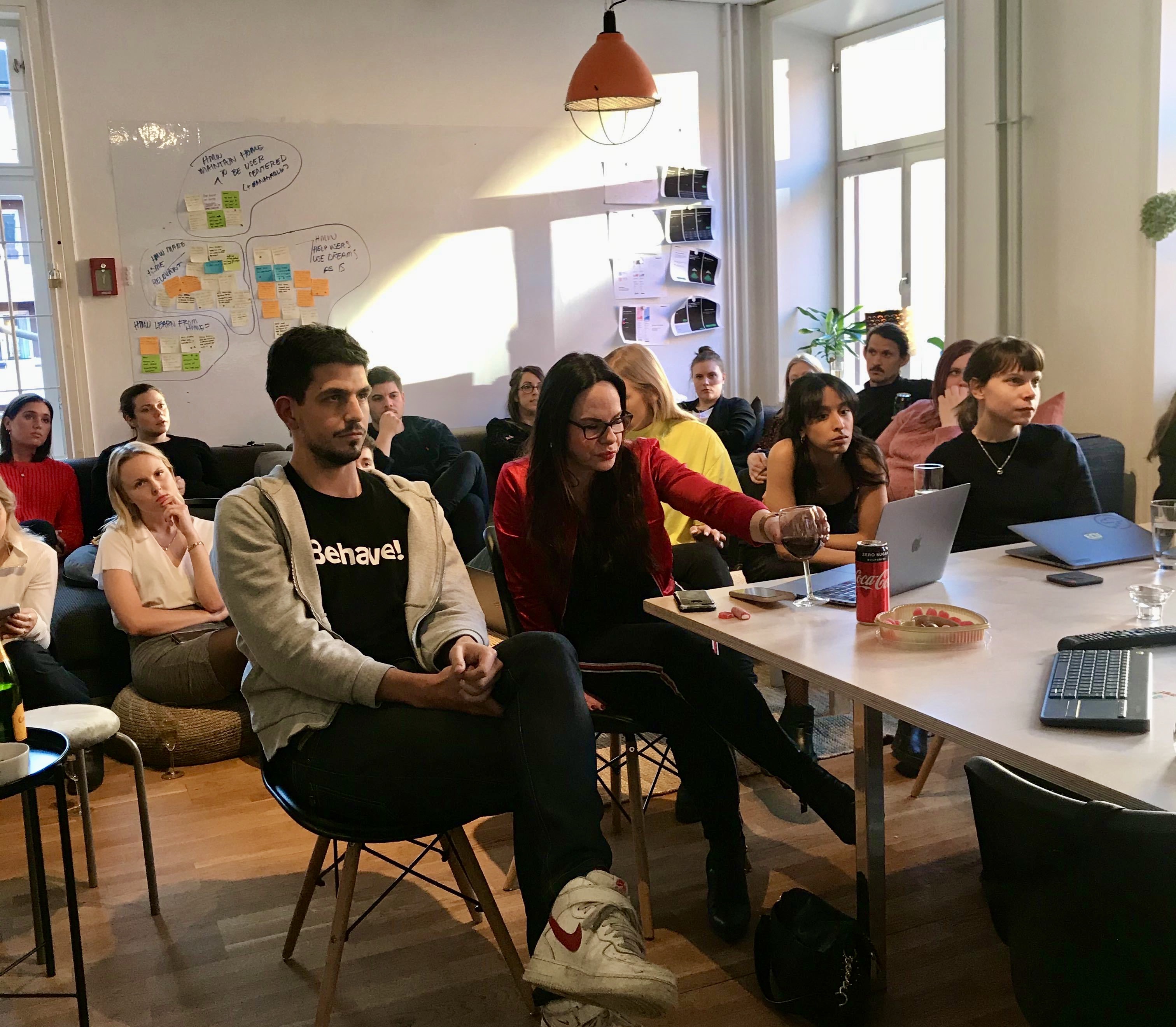
LEARNINGS
— As a facilitator, establish clear boundaries to guide the group effectively.
— Begin recruiting testers early to reduce the risk of last-minute no-shows.
— Identify potential roadblocks in advance to keep the process smooth.
— Prioritize testing one prototype at a time to avoid confusion.
— End with a thoughtful wrap-up to surface emotions, clarify any misalignments, and reflect on key takeaways.
